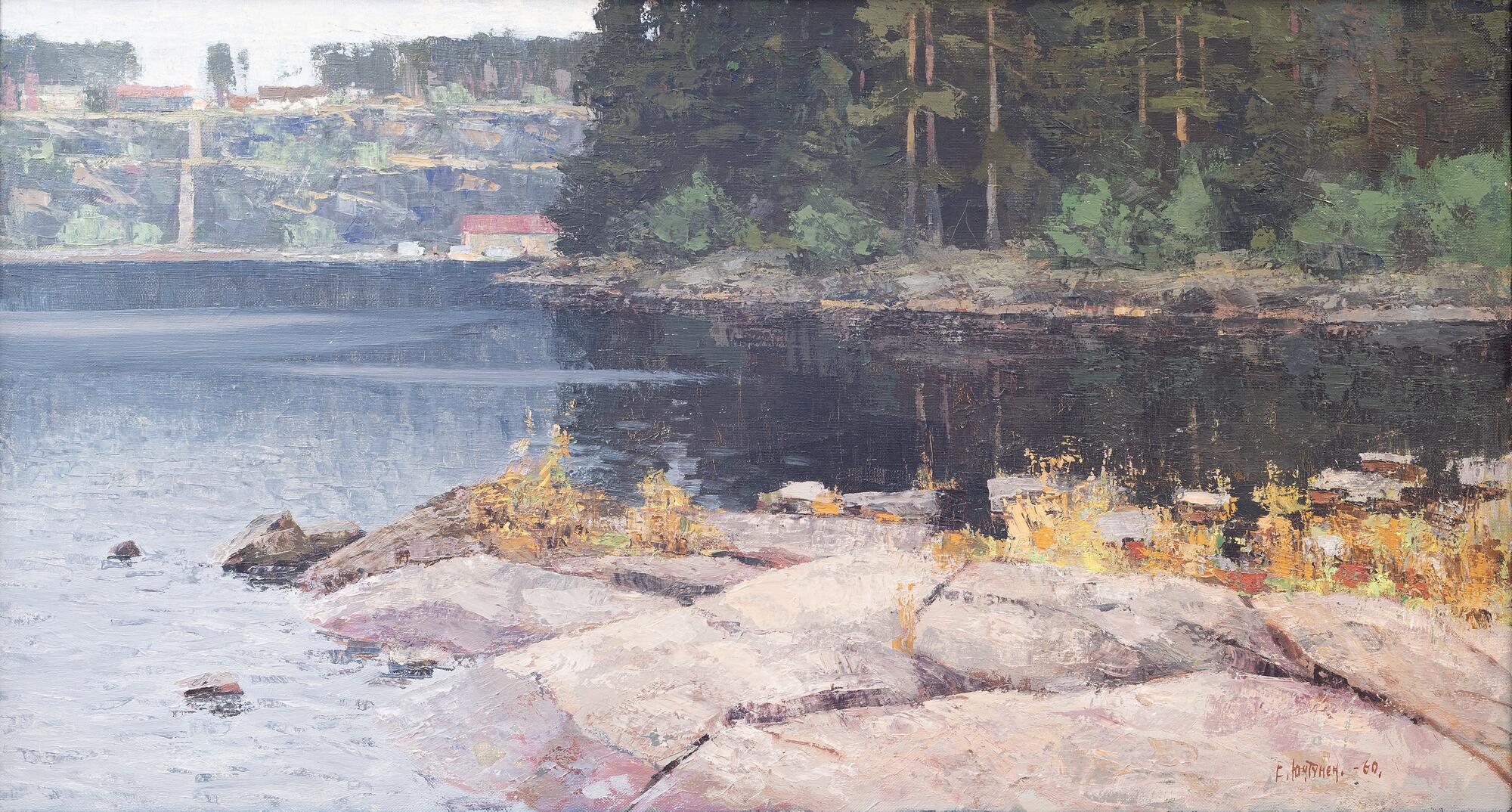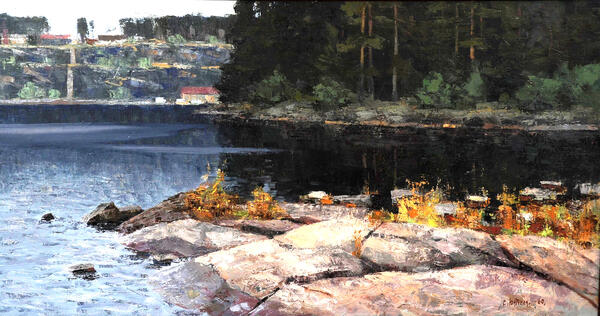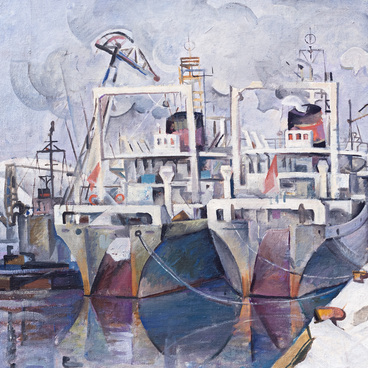Sulo Heikkievich Juntunen was a painter, graphic artist, and a People’s Artist of the USSR (since 1980).
He was born on September 1, 1915 in Petrograd. His father Heikki Juntunen was a shoemaker at the royal court and came from the Ingrian Finns. From 1920 to 1932, Sulo Heikkievich lived with his family in Finland. He studied at a folk school, and then at a vocational school where he studied locksmith, foundry and turning skills. In 1932, he returned to Leningrad, and in 1934, he arrived in Petrozavodsk. He studied at the art studio of the founder of the Karelian school of painting Veniamin Nikolaevich Popov at the House of Folk Art in Petrozavodsk.
His education was interrupted by the war. At the beginning of the Great Patriotic War, he was evacuated to the Perm region. There he changed many professions — from a lumberjack to a natural science teacher in a rural school. In 1945, he returned to Petrozavodsk, where he was offered to continue working as a teacher.
However, Sulo Heikkievich did not stop painting. In 1946, he was accepted as a member of the Union of Artists of the USSR. The turning point of his life was his participation in the All-Union Exhibition of 1951. After that, Sulo Heikkievich Juntunen devoted himself entirely to art. His works are housed in the State Tretyakov Gallery, the State Russian Museum, the Museum of Fine Arts of the Republic of Karelia, the National Museum of the Republic of Karelia, in private collections and collections in Russia and abroad.
In search of impressions, the artist visited various destinations in Karelia, Tuva, the Far East, Yugoslavia, the Kola Peninsula, Bashkiria and Western Siberia.
Sulo Heikkievich painted in a generalized, concise manner, avoiding compositional fragmentation.
He was born on September 1, 1915 in Petrograd. His father Heikki Juntunen was a shoemaker at the royal court and came from the Ingrian Finns. From 1920 to 1932, Sulo Heikkievich lived with his family in Finland. He studied at a folk school, and then at a vocational school where he studied locksmith, foundry and turning skills. In 1932, he returned to Leningrad, and in 1934, he arrived in Petrozavodsk. He studied at the art studio of the founder of the Karelian school of painting Veniamin Nikolaevich Popov at the House of Folk Art in Petrozavodsk.
His education was interrupted by the war. At the beginning of the Great Patriotic War, he was evacuated to the Perm region. There he changed many professions — from a lumberjack to a natural science teacher in a rural school. In 1945, he returned to Petrozavodsk, where he was offered to continue working as a teacher.
However, Sulo Heikkievich did not stop painting. In 1946, he was accepted as a member of the Union of Artists of the USSR. The turning point of his life was his participation in the All-Union Exhibition of 1951. After that, Sulo Heikkievich Juntunen devoted himself entirely to art. His works are housed in the State Tretyakov Gallery, the State Russian Museum, the Museum of Fine Arts of the Republic of Karelia, the National Museum of the Republic of Karelia, in private collections and collections in Russia and abroad.
In search of impressions, the artist visited various destinations in Karelia, Tuva, the Far East, Yugoslavia, the Kola Peninsula, Bashkiria and Western Siberia.
Sulo Heikkievich painted in a generalized, concise manner, avoiding compositional fragmentation.



